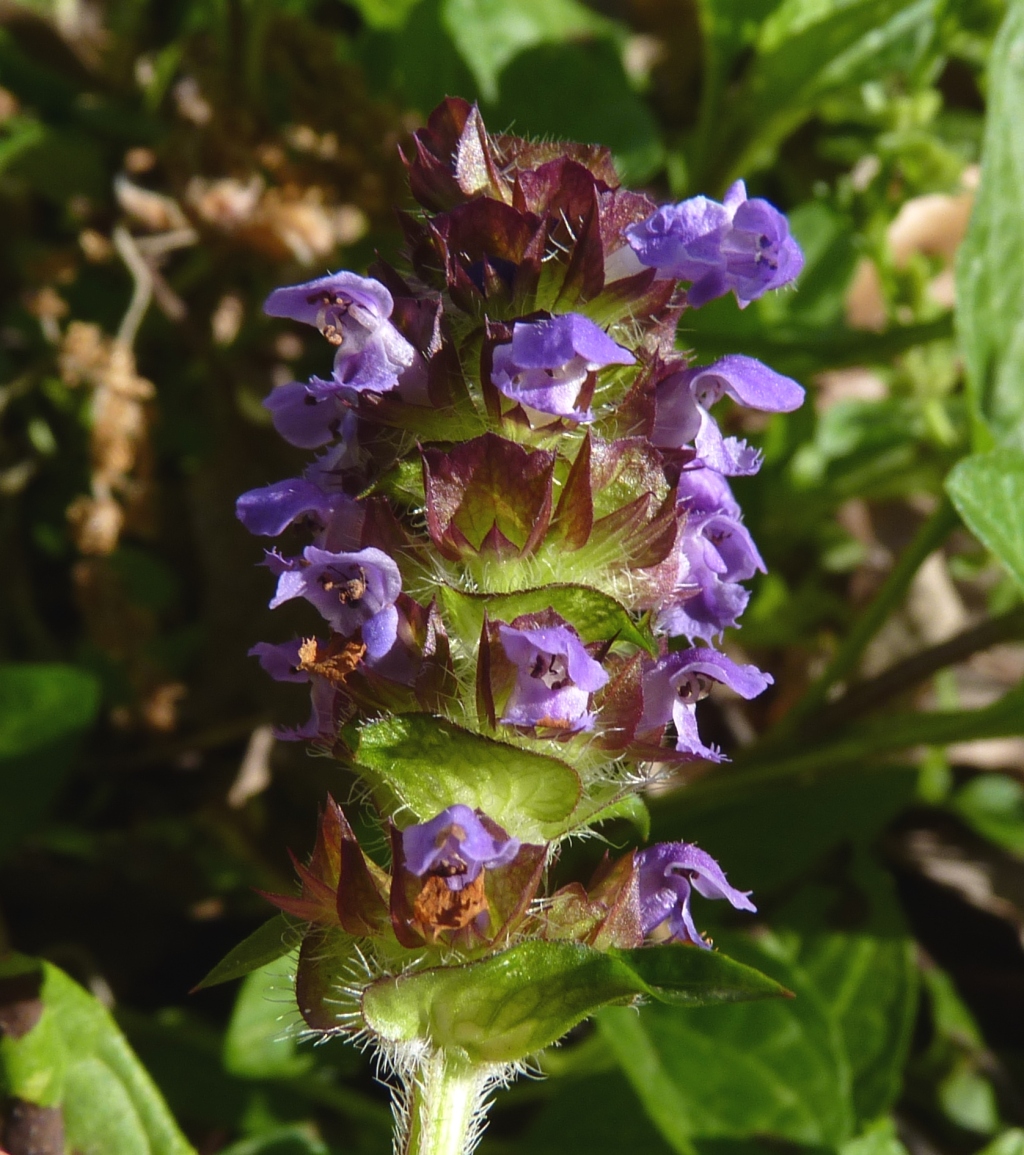Prunella vulgaris
L. Self-healProstrate to ascending herb; branches to c. 50 cm long, often rooting at lower nodes, usually glabrescent except for a few simple hairs mainly near nodes. Leaves ovate to narrowly ovate, 1.5–6 cm long, 7–25 mm wide, surfaces with scattered coarse hairs, apex obtuse to subacute, base broadly cuneate to truncate, margin entire to obscurely toothed; petiole 2–20 mm long. Inflorescence c. 2–9 cm long; bracts broadly cordate to c. orbicular, 10–20 mm long. Calyx 6–7 mm long, teeth of abaxial lip slightly shorter than or equal to adaxial lip; corolla 8–12 mm long, tube barely exceeding calyx, deep purple-blue; abaxial pair of stamens inserted near the middle and adaxial pair inserted near throat of corolla-tube. Mericarps c. 2 mm long. Flowers Nov.–Apr.
Wim, GleP, VVP, VRiv, GipP, OtP, WaP, Gold, CVU, GGr, DunT, NIS, EGL, EGU, WPro, HSF, HNF, OtR, Strz, MonT, HFE, VAlp. Also naturalised WA, SA, Qld, NSW, ACT, Tas. Native to Europe and temperate Asia. Excepting the far north-west, widespread and common on seasonally wet or permanently damp ground through much of the State.
Conn, B.J. (1999). Lamiaceae. In: Walsh, N.G.; Entwisle, T.J., Flora of Victoria Vol. 4, Cornaceae to Asteraceae, pp. 418–459. Inkata Press, Melbourne.
 Spinning
Spinning



